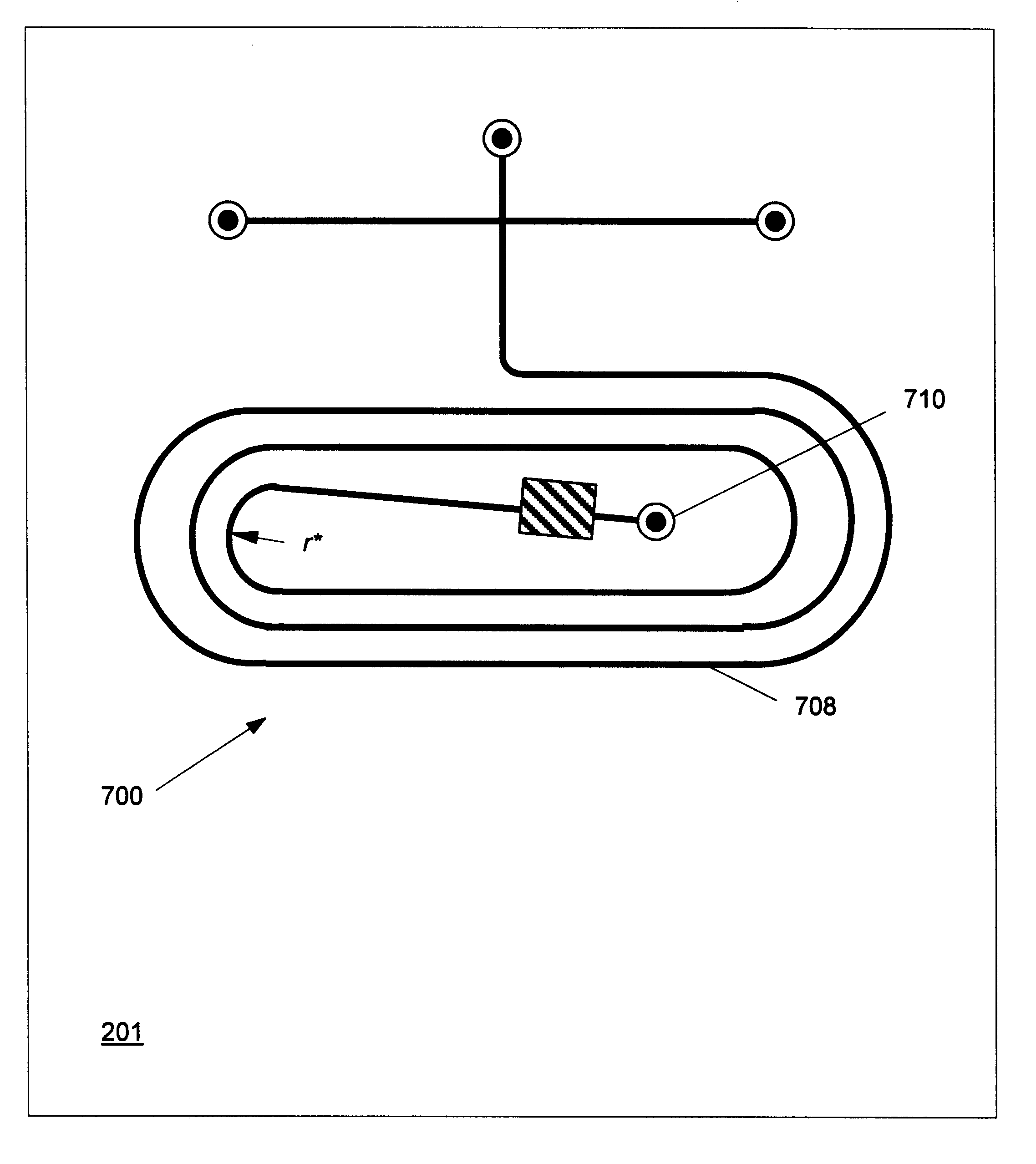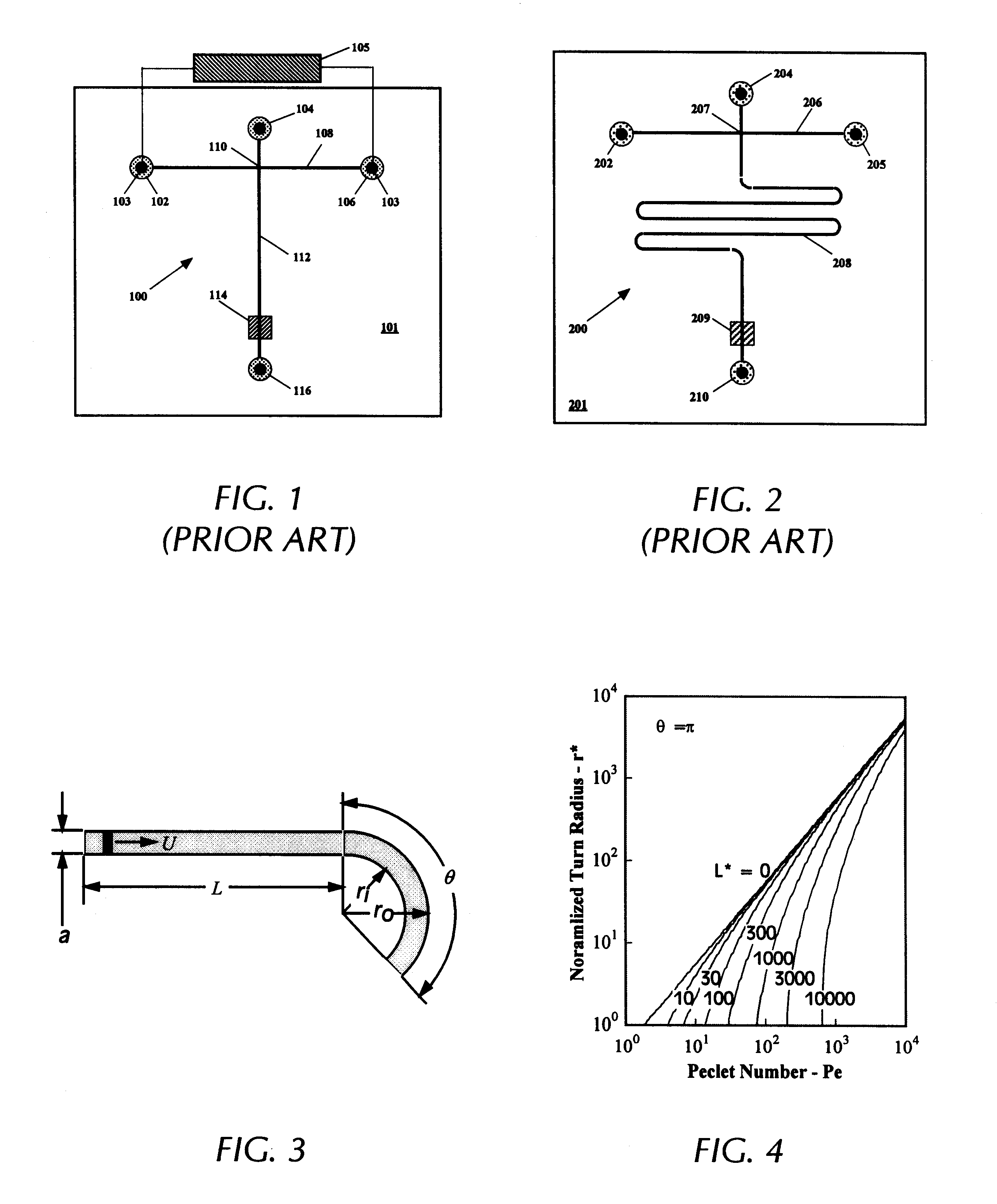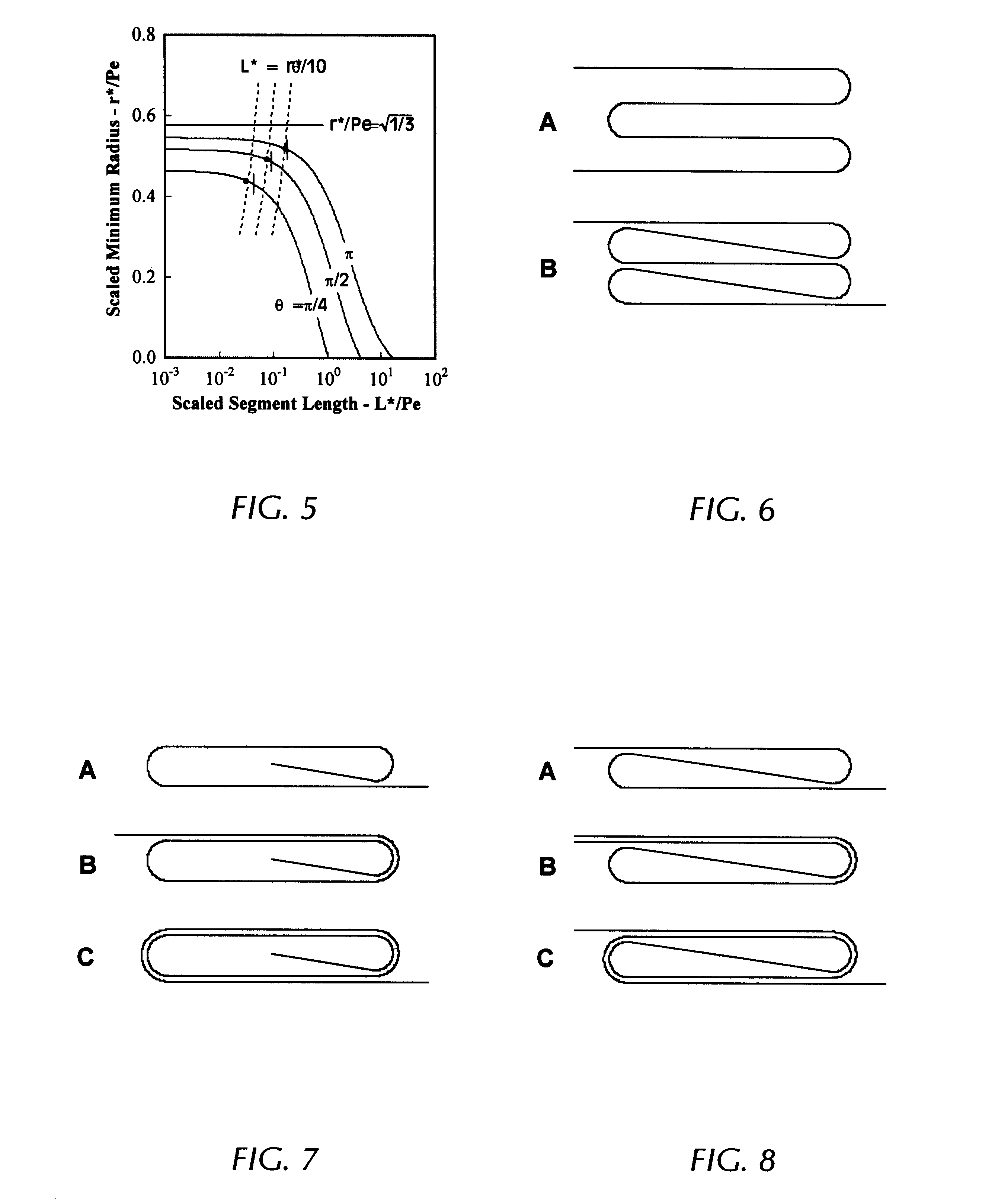Compact microchannel system
a microchannel system and compact technology, applied in the field of compact microchannel systems, can solve the problems of non-uniform fluid motion, non-uniform electrophoretic separation, and non-uniform dispersion, so as to reduce the minimum turn radius and reduce the minimum radius, without degrading the resolution of separation process
- Summary
- Abstract
- Description
- Claims
- Application Information
AI Technical Summary
Benefits of technology
Problems solved by technology
Method used
Image
Examples
Embodiment Construction
--Pleated and Coiled Columns
Both spiral and conventional folded columns offer advantages and drawbacks from a practical perspective. While spiral columns retain useful chip area in their interior, the minimum spiral radius may still be quite large for a high-performance column operating at high Peclet numbers. Such columns do not take advantage of the benefit of adjoining straight channel segments in reducing the minimum turn radius. Folded columns, on the other hand, can be constructed using relatively smaller turn radii when the straight channel segments are sufficiently long. Even so, conventional folded columns consisting of parallel straight segments joined by multiple turns make very poor use of available chip area. As shown in FIG. 6A, the spacing between the straight segments is twice the turn radius, and this may still be significant at high Peclet numbers. As a practical result, it is generally difficult to fold high-performance columns more than a few times using this con...
PUM
| Property | Measurement | Unit |
|---|---|---|
| length | aaaaa | aaaaa |
| length | aaaaa | aaaaa |
| Peclet number | aaaaa | aaaaa |
Abstract
Description
Claims
Application Information
 Login to View More
Login to View More - R&D
- Intellectual Property
- Life Sciences
- Materials
- Tech Scout
- Unparalleled Data Quality
- Higher Quality Content
- 60% Fewer Hallucinations
Browse by: Latest US Patents, China's latest patents, Technical Efficacy Thesaurus, Application Domain, Technology Topic, Popular Technical Reports.
© 2025 PatSnap. All rights reserved.Legal|Privacy policy|Modern Slavery Act Transparency Statement|Sitemap|About US| Contact US: help@patsnap.com



